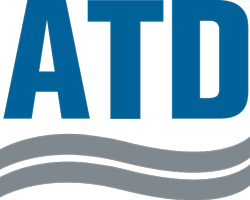EPA’s ZEV Truck Mandate Will Result in Dramatic Pre-Buy, No-Buy
Cosponsor the Transportation Freedom Act (H.R. 2814/S. 711)
ISSUE
Last year, the EPA issued its “Phase 3” rule which requires truck manufacturers to annually increase the percentage of ZEVs they sell. By model year 2032: 60% ZEVs for light-heavy vocational vehicles; 40% ZEVs for medium-heavy vocational vehicles; 30% ZEVs for heavy-heavy vocational vehicles; 40% ZEVs for day cab tractors; and 25% ZEVs for sleeper cab tractors. Last year, only 0.3% of commercial vehicle sales were ZEVs.
The U.S. lacks a national commercial vehicle charging network, which makes adoption of heavy-duty ZEVs impractical. A study released by the Clean Freight Coalition found that electrifying the U.S. commercial truck fleet would cost nearly $1 trillion in infrastructure and grid network upgrades to meet demand. Additionally, the Phase 3 rule estimates that in seven years an electric medium/heavy-duty vocational vehicle will cost only $15,000 more than a comparable diesel vehicle. However, today the cost difference between these vehicles is approximately $258,000. H.R. 2814/S. 711, introduced by Rep. Troy Balderson (R-Ohio) and Sen. Bernie Moreno (R-Ohio), would repeal Phase 3 and require new greenhouse gas standards that are economically practicable and technologically feasible. To preserve customer choice, members of Congress are urged to cosponsor H.R. 2814/S. 711 to stop the partial banning of diesel trucks.
BACKGROUND
EPA’s final rule would require manufacturers to convert an annually increasing percentage of their total vehicle sales to ZEVs with the projected sales percentages by MY 2032 for the following categories of vehicle: 60% of ZEVs for light-heavy vocational vehicles, 40% ZEVs for medium-heavy vocational vehicles, 30% ZEVs for heavy-heavy vocational vehicles, 40% ZEVs for day cab tractors, and 25% ZEVs for sleeper cab tractors. FAQs regarding EPA’s new rule can be found here, and ATD’s public comments regarding the rule can be found here.
EPA’s upfront vehicle cost differences between diesel and electric utilize overly optimistic assumptions. The EPA estimates that in nine years an electric sleeper cab will cost $15,000 more than a comparable diesel vehicle. By comparison, the difference between an electric Class 8 truck today and a comparable diesel-powered vehicle is approximately $220,000. Additionally, the average diesel-powered vehicle has a range of 1,000 to 1,500 miles whereas a heavy-duty ZEV has an estimated range of 150 miles. Lastly, charging infrastructure poses a daunting barrier to widespread heavy-duty ZEV adoption, as it is largely non-existent. While dealers are investing millions of dollars of their own capital in the infrastructure, training, and equipment to sell and service ZEVs, truck buyers are unlikely to buy these vehicles without a reliable public refueling infrastructure designed for commercial ZEVs.
The “Transportation Freedom Act” (H.R. 2814/S. 711) would restore customer choice and congressional authority over greenhouse gas standards by providing one national standard and long-term regulatory certainty for the truck industry by repealing the EPA’s Phase 3 rule It also mandates a 180-day window for EPA to replace the standard with tough but achievable standard for 2027. See summary here.
KEY POINTS
- The EPA’s Phase 3 rule, coupled with the EPA’s recently finalized $39 billion NOx rule, will result in a dramatic “pre-buy” in 2026 and a “no-buy” marketplace in 2027. When emissions standards are too stringent and rushed, business closures, job losses, and delayed environmental benefits will result.
- The U.S. lacks the charging infrastructure for the commercial trucking industry. A Roland Berger study highlighted the need for $620 billion solely to build charging infrastructure, with an additional $370 billion required for utility companies and the government to upgrade distribution grids for commercial vehicle demand alone.
- H.R. 2814/S. 711 would restore congressional authority over fuel economy/greenhouse gas standards and ensure regulatory predictability and stability for the next ten years. The aggressive Biden mandates were not set by Congress. Legislation is needed to restore a uniform, national fuel economy standard set by Congress.
STATUS
Members are urged to cosponsor H.R. 2814/S. 711, introduced by Rep. Troy Balderson (R-Ohio) and Sen. Bernie Moreno (R-Ohio), respectively, which would repeal the EPA’s heavy-duty ZEV mandate and set one national standard.
Contact

